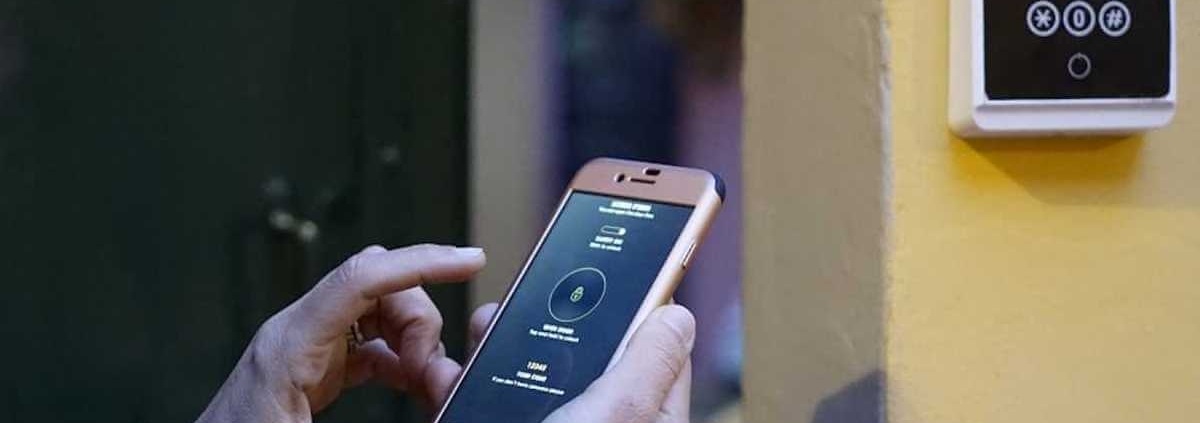Enhancing the Guest Experience with Airbnb Self Check-In: Operation and Configuration
Automation and Smart Home Technologies for Airbnb
A successful Airbnb venture relies heavily on the quality of the guest experience. Acknowledging this, Airbnb introduced the self-check-in feature, a technological breakthrough aimed at simplifying the guests’ stay. This automated system alleviates the workload for both guests and hosts, streamlining the check-in process and offering unmatched convenience. The concept is gaining popularity due to its practicality, allowing guests to arrive early or late without the need for host coordination.
Building a Successful Passive Airbnb Management Business
Comprehending the Self-Check-In Process
As implied by its name, self-check-in offers guests the ability to settle into their rented space without any direct interaction with the property owner or local contact. There are several methods to achieve this, including keypads, smart locks, key lockboxes, or doorman services. To ensure security, guests are provided with a unique code that grants them authorized access to the property. The code prevents unauthorized access, ensuring that only those who have made the booking can enter the apartment. Guests can use the code to retrieve the keys without any direct human interaction.
Reasons to Adopt Self Check-In
Time Efficiency
The traditional check-in method can be time-consuming and laborious. It demands constant communication and coordination, from monitoring the guests’ estimated arrival time, to accounting for traffic, flight schedules, and more. This process usually requires a volley of calls or text messages until the guests have safely arrived. Moreover, the strain of early morning or late-night check-ins can also be avoided with self-check-in. This system alleviates these inconveniences by providing guests with precise instructions on how to access the apartment, cutting down on communication time and the need to track their arrival.
Reduced Stress for Guests

There may be instances where a host or property manager is unavailable at the time of check-in, leading to potential delays for the guests. After a long journey, waiting for the keys or engaging in conversation can be taxing. The self-check-in feature significantly alleviates this stress, providing guests with the freedom to settle at their own pace without the worry of inconveniencing anyone with their early or late arrival.
Fostering Business Travel-Friendly Environment
Business travelers often favor the expediency and flexibility offered by self-check-ins. Hence, hosts that facilitate this process are perceived as business-travel-friendly. Additionally, hosts can accept same-day reservations when the self-check-in feature is enabled.
Instills Trust in Guests
Offering guests the liberty to self-check-in demonstrates the host’s trust in them. Verification is carried out when the reservation is confirmed. By providing them with the self-check-in code, hosts are effectively expressing their faith in the guests to respect and care for the property during their stay. This level of trust positively impacts the guests and enhances the property’s rating.
Ensures Privacy Upon Arrival
Airbnb properties are meticulously decorated for guests. When they arrive, guests often wish to explore the property in privacy. The self-check-in process facilitates this private exploration.
Promotes Health and Safety Practices
In the current global health scenario, self-check-in minimizes contact between hosts and guests, showcasing your concern for everyone’s health and safety.
Steps to Implement a Seamless Self-Check-In System

Understanding the importance of self-check-in is the first step. The next is to set up the system.
The following guide details how to automate the self-check-in process for your Airbnb property:
Make the Self Check-In Option Visible on Your Listing
When introducing a new feature to your Airbnb property, it’s essential to communicate it to potential guests. Thus, your listing should highlight the availability and specifics of the self-check-in process. Here’s how you can activate and display the self-check-in feature:
- Log in to your Airbnb account.
- Navigate to ‘Listings’ and choose the particular listing you wish to alter.
- Under the ‘Info for Guests’ section, select ‘Check-in Method’.
- Opt for the method that is most suitable for you, and incorporate any extra directions.
- Save the changes and add clear instructions for the guests.
After activating self-check-in, focus on crafting a detailed check-in message for your guests.
Compose the Check-In Message
By default, Airbnb sends a message to guests 36 hours prior to their arrival. However, this message might get lost in their inbox. To ensure a smooth check-in, it’s beneficial to send a personally crafted message detailing the check-in procedure, which will guide the guests on how to gain access to the property, minimizing potential confusion.
When crafting the check-in message, consider the following points:
- Reassure the guests that the property is ready and you’re expecting their arrival.
- Provide detailed directions to the property, highlighting any nearby landmarks and instructions for getting there from the airport.
- Include information about parking if guests are bringing their vehicles.
- Don’t forget to provide the Wi-Fi password, as guests generally expect internet connectivity. Read about Mastering Airbnb’s Wi-Fi Standards.
- Provide contact details for any queries or assistance during their stay.
Any other special instructions can also be included in the message. A comprehensive check-in message paves the way for effective communication between the host and the guest. Using certain tools can help automate these messages, saving time.
Incorporate Images and Videos
Consider including images in your check-in message to illustrate the check-in process. Visual guidance can often be more beneficial, making it easier for guests to understand the lock system’s workings. Remember to review the listing preview and provide a detailed description before making it public.
Provide a Manual
Consider providing a manual if you’re enabling self-check-in for your Airbnb property. The manual should guide the guests around the property, including details such as check-in/check-out timings, emergency contacts, nearby attractions, instructions for using appliances, internet facilities, and parking information. Any rules and regulations should also be covered in the manual. The manual can be sent to the guest via email, or a hard copy can be left at the rental for reference.
Welcome Guests with a Personalized Message and Gift
Make your guests’ experience memorable with a warm welcome. Consider leaving a handwritten message thanking them for choosing your listing. A gift or fresh flowers can also be left for their arrival.
Check-In with Your Guests
Sending a brief message to your guests after they’ve checked in is a good practice. The message can simply wish them a pleasant stay, affirm your availability, or ensure the check-in process went smoothly.
What Techniques Can You Utilize for Self Check-In?
Several methods can be employed for implementing self-check-in at your Airbnb property, such as smart locks, lockboxes or key safes, keypads, or building staff. Key exchange services are also available for this purpose.
Smart Lock
Smart locks are increasingly common in modern properties. Instead of a physical key, a security code is required to unlock a smart lock, which can be remotely managed via a device like a smartphone. Once a booking is made, the host can send the security code to the guests via email or text message. Airbnb can be integrated with third-party software to generate a new code for each guest, ensuring secure access to the property during their stay. Once the guests check out, the code is invalidated and replaced with a new one for the next guest.
Despite their numerous advantages, smart locks can be susceptible to hacking and require batteries, an internet connection, and a smart device to operate. They are also pricier than traditional locks.
Keypad

Keypads are a secure, keyless entry option that uses a numerical code to unlock the door. The security code is provided to guests prior to their check-in. However, these systems rely on electricity or batteries, and the installation cost can be high. Keypads can also be vulnerable to hacking.
Lockbox or Key Safe
A more traditional option involves the use of a lockbox or key safe to store the key. Various lockboxes are available, including digital ones that require a code to open and smart ones that can be opened with a phone. While secure and available in different price ranges, lockboxes can jam if not used properly, and a security breach can occur if they are left open.
An Introduction to Key Lockboxes for Airbnb Renters
Building Staff
In a traditional setting, the building staff may hold the key and give it to the guests upon arrival.
Key Exchange Services
Several companies offer key exchange services to Airbnb hosts, typically operating 24/7. Guests can collect the keys from these services. Local services should be researched for guest convenience.
Conclusion
As we conclude, this information helps make the rental process smoother for both you and your guests. By offering a secure and convenient self-check-in option, you enhance the guest experience while fostering trust and boosting your business’s credibility.












